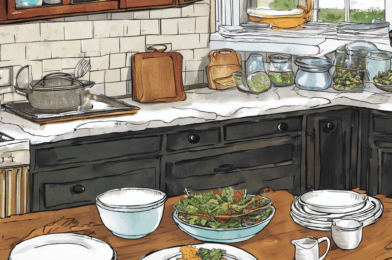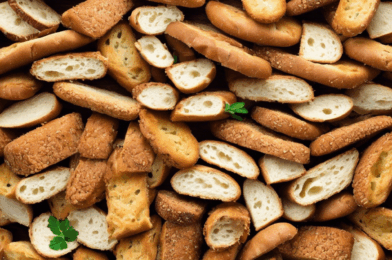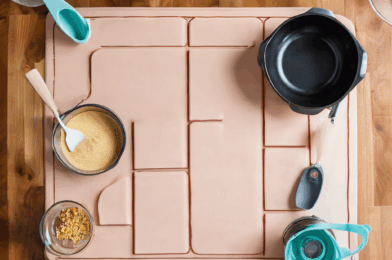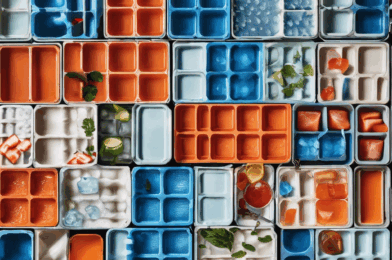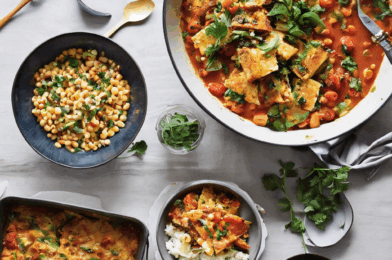That humble wooden spoon tucked away in your kitchen drawer deserves far more recognition than merely serving as a mixing tool. This timeless kitchen implement, often overshadowed by flashier gadgets, harbors potential well beyond its conventional stirring duties. Discovering these alternative applications transforms this basic utensil into a multi-functional powerhouse worth its weight in culinary gold. Beyond its obvious role in sauce-making and batter-mixing, your wooden spoon awaits deployment in surprisingly clever ways throughout your home.
The Overlooked Kitchen Hero: Why Wooden Spoons Excel
Before exploring unconventional applications, understanding what makes wooden spoons special highlights why they perform admirably in diverse scenarios. Unlike their metal counterparts, wooden utensils conduct heat poorly—making them perfect for high-temperature applications without burning hands. Their natural composition prevents scratching delicate cookware, while their porous nature builds character through gradual absorption of flavors over years of use.
Wooden spoons also stand apart through their durability. A quality wooden spoon often outlasts multiple generations of other kitchen tools, improving with age rather than deteriorating. Their gentle edges prove kind to both cookware and food textures, preventing unnecessary damage during preparation.
Beyond Stirring: Unexpected Kitchen Applications
The Perfect Pasta Doneness Test
Forget timing or throwing pasta against walls—your wooden spoon offers a more reliable method for testing pasta doneness. During cooking, remove a single strand and drape it across your wooden spoon. Perfectly cooked pasta bends gracefully over the curvature without breaking, while undercooked pasta remains rigid and overcooked pasta flops completely or breaks apart. This visual indicator proves more reliable than arbitrary cooking times, especially when preparing unfamiliar pasta shapes.
The Boil-Over Prevention Technique
Prevent pots from boiling over by placing a wooden spoon horizontally across the top. When bubbles rise and contact the relatively cool wooden surface, they burst immediately rather than building up and spilling over. This occurs because the wood disrupts the surface tension of rising bubbles, causing them to collapse before creating a cascade effect. While not foolproof for vigorously boiling liquids, this technique buys precious seconds when cooking pasta, potatoes, or other foods that typically generate excessive foam.
The Makeshift Rolling Pin
When your rolling pin remains elusive but cookie cravings strike, wrap your wooden spoon’s handle with plastic wrap or parchment paper. The smooth cylindrical surface works remarkably well for rolling out smaller portions of dough for cookies, dumplings, or mini tarts. While lacking the weight and diameter of a proper rolling pin, this improvisation saves countless baking projects from abandonment.
The Frosting Leveler
Create perfectly level cake layers without specialized equipment by using a wooden spoon’s handle. After applying frosting between layers, position the handle horizontally across the cake’s diameter and gently slide it across the surface, removing excess frosting and creating an even layer. This technique ensures uniform frosting distribution without specialized spatulas or leveling tools.
Wooden Spoons as Practical Problem Solvers
The Guitar String Lifesaver
Musicians rejoice—a wooden spoon provides the perfect tool for changing guitar strings without specialized equipment. When removing old strings, wrap them around the spoon’s handle to prevent dangerous coiling that could cause injury. During installation, the spoon’s handle helps maintain tension while winding new strings. This technique prevents string kinking while protecting fingers from sharp wire ends.
The Stain Removal Assistant
Address stubborn laundry stains by using your wooden spoon’s rounded end to apply stain treatments with precision. The gentle curved surface applies just enough pressure to work products into fabric without damaging delicate materials. After applying stain remover, gently press the fabric against the spoon’s bowl to lift embedded particles without harsh scrubbing that might damage fibers.
The Child-Friendly Paint Mixer
Transform paint mixing into a child-friendly activity using designated wooden spoons. Their natural composition means they won’t react with water-based paints, while their smooth surfaces prevent splashing typically associated with vigorous stirring. Dedicate specific spoons exclusively for craft purposes to keep kitchen tools separate from art supplies.
Home Improvement Hacks Using Wooden Spoons
The Wallpaper Smoother
When hanging wallpaper, the rounded edge of a wooden spoon’s bowl works beautifully for smoothing bubbles and ensuring proper adhesion in corners. Unlike plastic smoothing tools that might create static electricity (attracting dust to freshly applied adhesive), wood remains neutrally charged. The spoon’s curved edge also reaches awkward corners without damaging delicate paper surfaces.
The Paint Can Resealer
Extend paint longevity by using a wooden spoon to create an airtight seal when closing partially used cans. After wiping the rim clean, tap around the perimeter of the lid using the spoon’s handle. This technique ensures even pressure distribution and creates a superior seal compared to hammering, which often warps lids and compromises future closure.
The Scratch-Free Furniture Mover
Place wooden spoons beneath furniture corners when rearranging rooms to reduce friction and prevent floor scratches. The smooth wooden surface glides across flooring while distributing weight more effectively than plastic alternatives that might crack under pressure. This approach protects both your floors and furniture during rearrangement projects.
Gardening Applications That Surprise
The Seed Spacing Template
Create perfectly spaced seed rows by pressing your wooden spoon’s handle into freshly prepared soil at regular intervals. For larger seeds like beans or peas, these indentations create ideal planting depth without measuring tools. The handle’s consistent diameter ensures uniform sowing depth, improving germination rates significantly.
The Gentle Transplanter
When separating delicate seedlings, the rounded edge of a wooden spoon’s bowl gently lifts root systems without causing damage. Unlike metal tools that might slice through tender roots, wood provides just enough firmness without sharp edges. Designate a specific spoon for this purpose to avoid cross-contamination with kitchen uses.
The Compost Aerator
Maintain healthy compost by occasionally aerating with a wooden spoon designated for garden use. The handle pierces compacted layers while the bowl portion moves materials without compressing them further. Unlike metal tools that might react with compost acids, wood remains chemically neutral while introducing beneficial microorganisms from its porous surface.
Crafting and DIY Applications
The Perfect Bookbinding Tool
Bookbinders appreciate wooden spoons for creating crisp folds without specialized equipment. The smooth rounded edge of the bowl burnishes paper folds to perfection without tearing delicate pages. This technique proves especially valuable when working with handmade papers that might resist conventional folding methods.
The Clay Shaping Assistant
Ceramic artists utilize wooden spoons for creating consistent curved surfaces when hand-building with clay. The smooth bowl portion shapes without leaving fingerprints, while the handle creates perfect cylindrical impressions for decorative elements. Unlike metal tools, wood releases easily from clay without sticking or causing unintended texture.
The Natural Dyeing Helper
When experimenting with natural fabric dyes, dedicate wooden spoons for stirring specific color baths. The wood’s porous nature gradually absorbs pigments, preventing cross-contamination between different dye projects. This absorption actually becomes beneficial over time, as spoons develop richer patinas that indicate their dedicated colors at a glance.
Caring for Your Multi-Purpose Wonder
These diverse applications highlight why quality wooden spoons deserve proper maintenance. Extend their versatility through regular mineral oil applications, preventing excessive drying and cracking. Avoid prolonged soaking and dishwasher cleaning, which degrades wood fibers prematurely. Instead, wash promptly after use with mild soap and warm water, then allow thorough air drying.
For spoons used in non-culinary applications, maintain separate storage to prevent cross-contamination. Consider marking handles with small colored bands to designate specific purposes, ensuring craft spoons never return to food preparation duties.
Conclusion: The Unsung Hero of Household Tools
The wooden spoon’s versatility extends far beyond stirring your morning oatmeal or evening soup. From practical kitchen problem-solving to unexpected household fixes, this simple implement demonstrates why traditional tools often outshine their modern counterparts in versatility and longevity. Next time you reach for specialized gadgets, consider whether your trusty wooden spoon might already provide the perfect solution.
By embracing these alternative applications, you transform an ordinary kitchen staple into an extraordinary multi-purpose tool. The humble wooden spoon deserves recognition not just as a cooking implement, but as one of the most versatile tools in your entire household arsenal.

